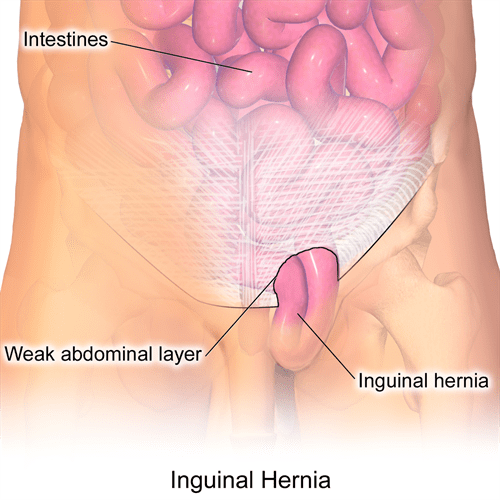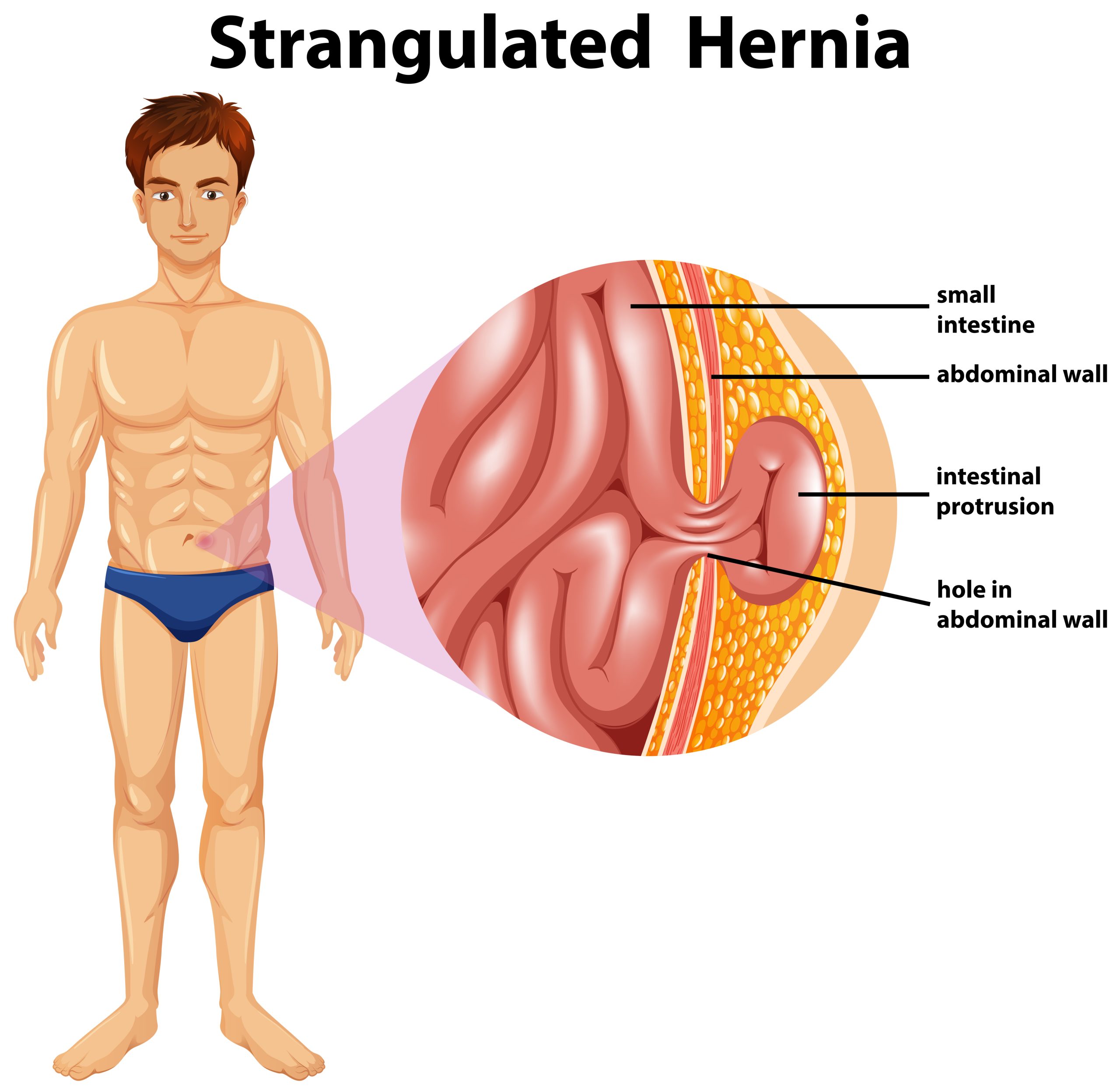An inguinal hernia is a typical disorder which arises as a result of straining or when some organs, for instance, a piece of the intestine, pushes its way through a hole in the stomach muscles. This shows up as a swelling in the groin region and leads to issues of ache, pain and other related problems. Although inguinal hernias can appear in both sexes, it is widespread among men because of anatomical features. In this blog we are going to talk about what are inguinal hernias, what causes them, what are the signs of inguinal hernias and what are the hernia treatments available and why it is crucial to see a doctor.
The meaning of the term Inguinal Hernia:
The word “inguinal” is used to describe a region just below the waist at the level of the groin. Other Hernias: An inguinal hernia occurs when tissues find their way through an area which in this case is the weak area in the abdominal wall close to the inguinal Canal. It is an aperture in the anterior abdominal wall situated in the inguinal region in such a way that in males the spermatic cord passes through it while in females it provides attachment to the round ligament of the uterus. Hernias tend to surface where there is pressure on the abdomen muscles which results in tightening and even thinning of the abdominal wall so that the tissue pushes through this small opening.


There are two types of inguinal hernias:
- Indirect Inguinal Hernia: This type of hernia is more common and it is mostly an inherited hernia or a congenital hernia, that is, hernia that occurs at birth. This happens when the inguinal canal does not close during fetal development leading to a weak spot that allows the intestines to protrude through.
- Direct Inguinal Hernia: This type occurs with time especially when one is older or if the abs were overworked. Inguinal hernia happens when there is a soft spot in that wall of the abdomen that has an area called the inguinal canal.
Causes of Inguinal Hernia
Several factors can contribute to the development of an inguinal hernia, including:
- Congenital Weakness: Sometimes, people are born with weak muscles in their abdomen meaning that they are more susceptible to hernias than others. This is particularly so in cases if an indirect inguinal hernia is being experienced.
- Excessive Strain: Injuries that damage the abdominal muscles cause the formation of hernias and common activities include lifting heavy objects, hard physical work or straining during defecation or while urinating.
- Chronic Coughing or Sneezing: Smoking or sneezing due to an allergy, for example, creates pressure in the abdominal area – a hernia, in other words.
- Obesity: Obesity also puts force on the abdominal muscles hence causing pressure that may lead to hernia formation.
- Aging: However, as people grow older they develop somehow weak and less elastic muscles which increases their vulnerability to hernias.
- Pregnancy: Working muscle of the abdomen during pregnancy is tremendously stretched by the increasing size of the uterus, hence pregnant women are at a high risk of developing hernias.
Symptoms of Inguinal Hernia
The two most frequent signs of an inguinal hernia are swelling in the groin area and the formation of a lump in the scrotum if you are a male. Other symptoms include:
- Pain or Discomfort: Patients with an inguinal hernia complain of pain and discomfort in the lower abdomen which intensifies when the patient is seated, lifting an object, coughs or forges. The pain may be mild or severe depending on the size of the hernia that has developed in the abdomen.
- Heaviness or Weakness in the Groin Area: Pain in the abdomen or groin is a straight indicator and is generally described as a heaviness, weakness or pressure. People may also have some pulling sensation around the bulge.
- Swelling or Tenderness: When judged that the hernia protrudes into the scrotum, males could experience either inflammation of this part or discomfort when touched.
- No Visible Bulge: In some cases, there may not be a lump seen at the beginning, but a person feels pain or a sensation of tightening in the groin area.
At other times, inguinal hernias may produce moderate pain and this may be attributed to other diseases. Nevertheless, the manifestations of the given illness worsen in time, when the hernia is not treated.
Complications of Inguinal Hernia
An inguinal hernia may not necessarily be life threatening and it is recommended that one seek medical attention as it can become dangerous at some stage. The two most significant complications are:
- Incarcerated Hernia: In some cases the tissue can herniate into the abdominal wall and even if it is forced back it cannot remain in place. This condition if referred to as incarceration may result in severe pain and may in fact cause compromise of blood flow to the intestines hence requires emergency intervention.
- Strangulated Hernia: In the case where the incarcerated hernia results in occlusion of blood supply to the intestines or any other tissue, then it is referred to as strangulated hernia. This is a dangerous condition that has to be operated on in order not to transform into a condition that leads to the formation of gangrene and other complications that are fatal.


Diagnosis of Inguinal Hernia
An inguinal hernia is usually diagnosed during the physical assessment of a patient by a physician. The doctor will look for a hernia which is felt as a bulge at the groin region and when the patient coughs or strains the bulge may become apparent. At times the diagnosis of the hernia and the size and degree of advancement is made probable with imaging studies like sonogram or a CT scan.
Available Management Strategies in Inguinal Hernia
This is usually in accordance with the size of the hernia coin, the stage of the protruding tissue and the health status of the affected individual. Some of them are non-invasive while others require surgery to be performed.
- Watchful Waiting
There are instances when a relatively small hernia that is not painful or causing any serious problems can be treated without surgery, by means of a wait and observe method. In such cases the patient is advised not to lift heavy objects and verify activities that would complicate the hernia even further. Fixed check-ups should be made to observe change or worsening of the condition of the hernia.
- Surgical Repair
In most conditions, surgery is advised for inguinal hernia treatments particularly when such a hernia is Big, when the patient experiences severe pain or when the hernia is far from complications. There are two primary types of hernia repair surgery:
- Open Hernia Repair (Herniorrhaphy): While performing this procedure, the surgeon makes an incision in the region of the groin, pulls the bulging tissue back into the abdomen, and does suturing of the gap in the abdominal muscles for reinforcement purpose using sutures or the synthetic mesh.
- Laparoscopic Hernia Repair: This is an endoscopic process that is carried out with the aid of small incisions at the abdomen and with the help of a laparoscope which is a thin tube with an attached camera and other instruments for surgery. The bulging tissue is then re-orientated and the defect in the abdominal wall is then sutured or reinforced using mesh. Laparoscopic surgery has proven to be faster in surgeries recovery time and the pain that comes with the surgery is minimal in comparison to the open repair.
Recovery After Surgery
Most patients are usually able to go back to work, school or do their normal activities soon after surgery and are usually off work or school for a few weeks after the surgery depending on the nature of the surgery that you underwent or the kind of surgery, recovery rates vary from one person to the other. Of major concern is the necessity to steer clear of activities that involve heavy exertion or lifting things during the period of recovery in order to avoid the occurrence of the hernia again.
Conclusion
An inguinal hernia is quite widespread but it is impossible to ignore it as the condition may worsen over time and become severe. This is why early detection and management of the condition are critical in order to avoid aggravation and have a better quality of life. If there is indication of a hernia like swelling on the groin or pain a doctor should be consulted for proper advice. Surgikure repair is the best treatment; with improvements on minimally invasive procedures, patients get well sooner and with less discomfort as compared to the past.
